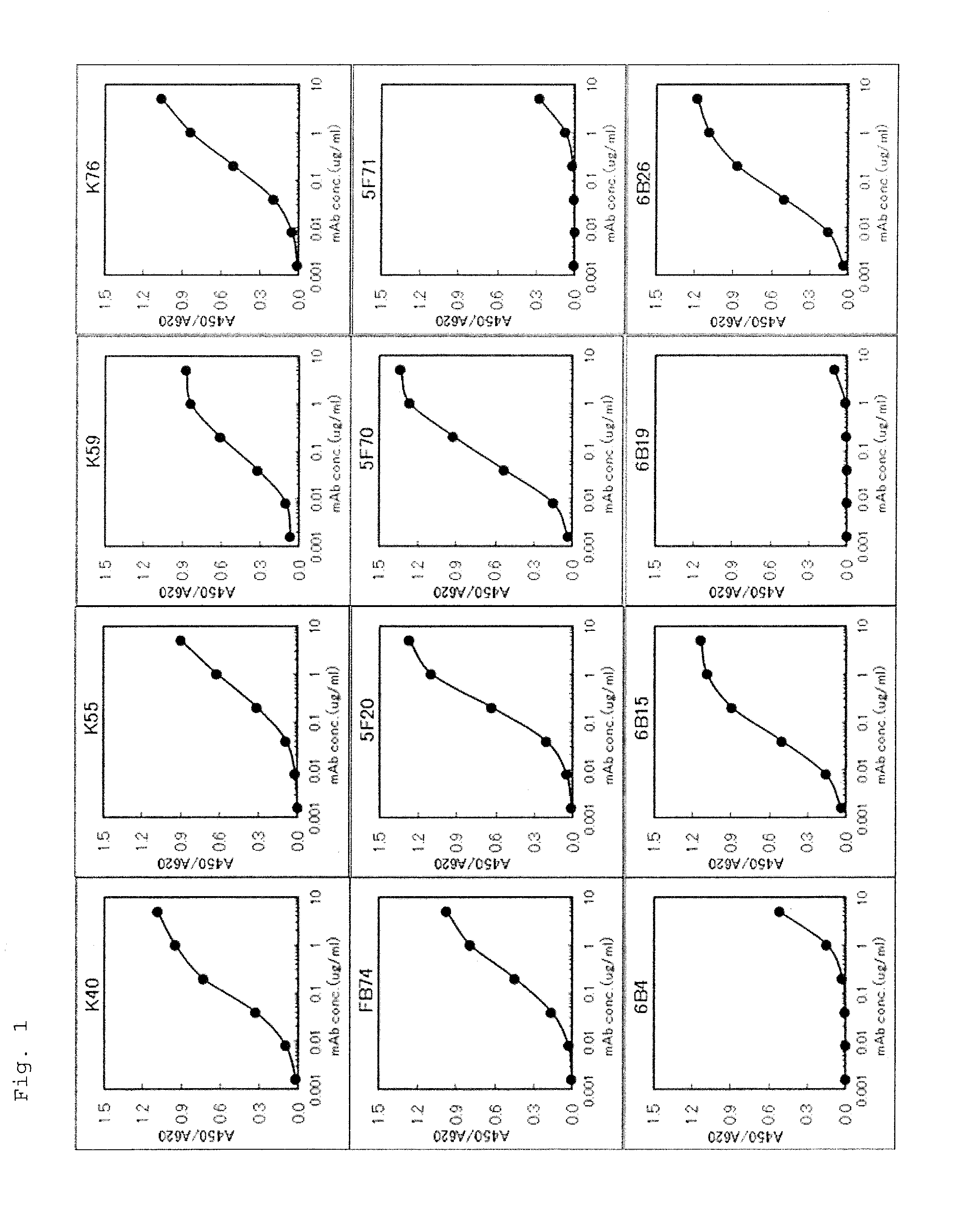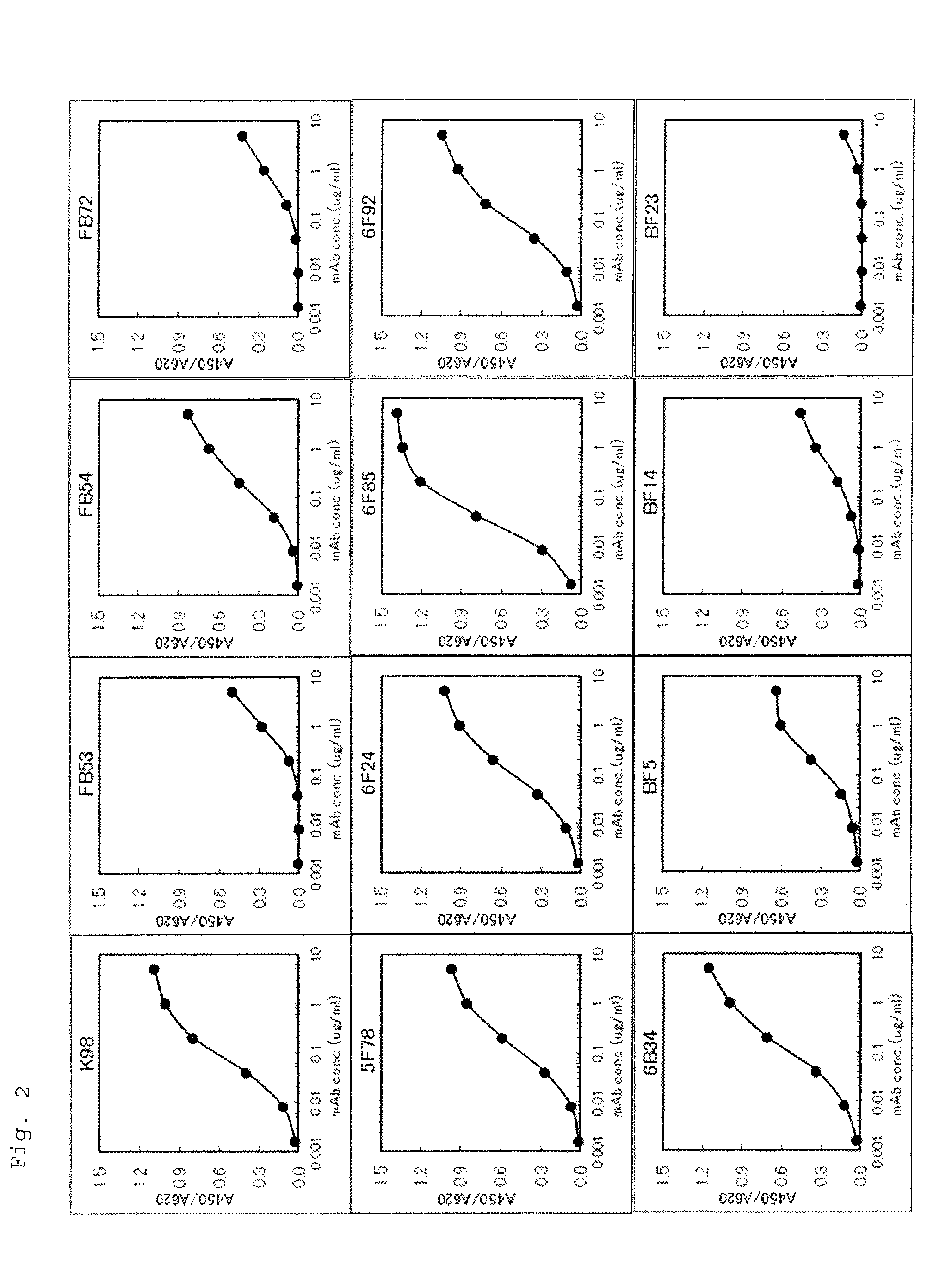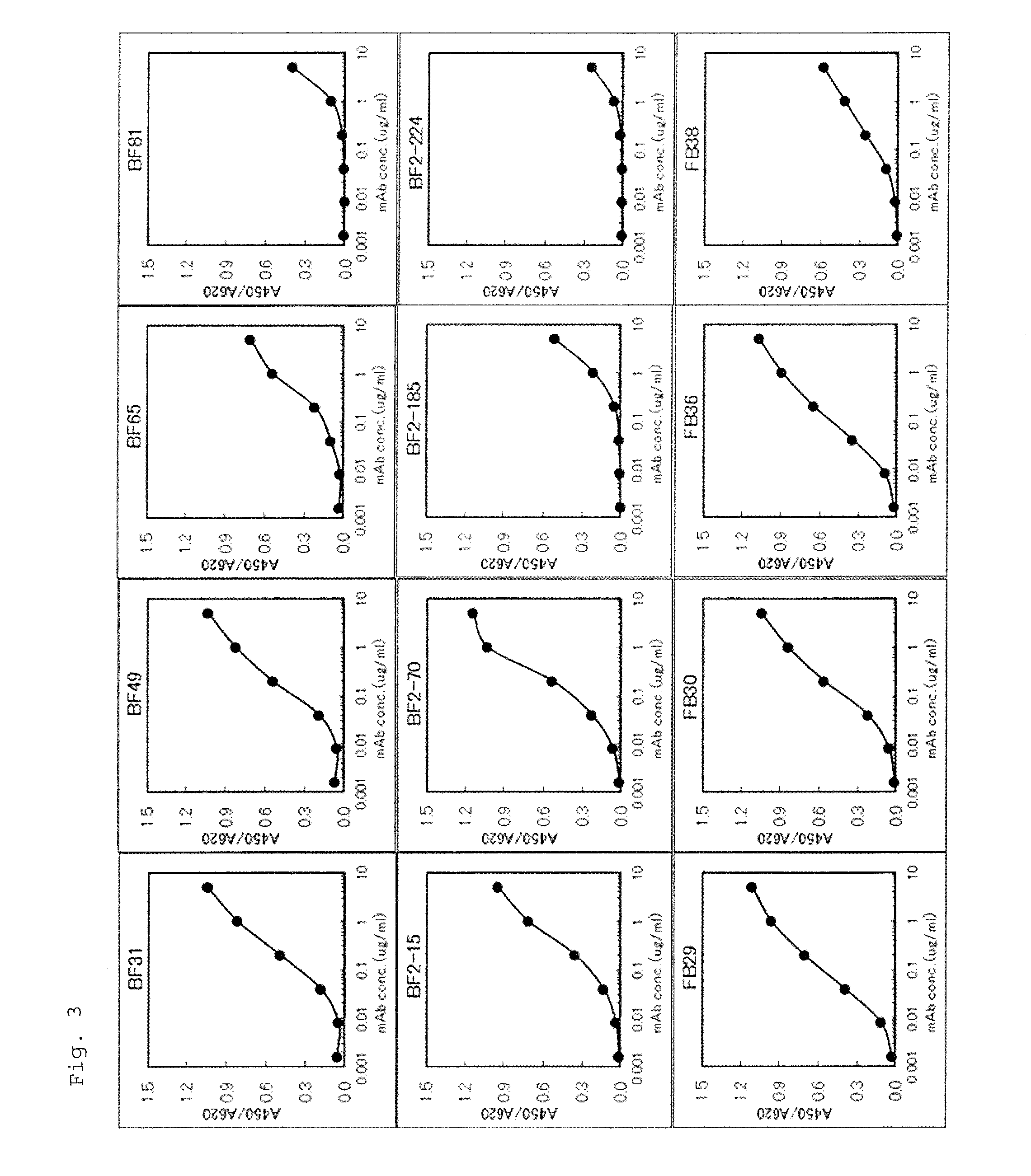Monoclonal antibody against human midkine
- Summary
- Abstract
- Description
- Claims
- Application Information
AI Technical Summary
Benefits of technology
Problems solved by technology
Method used
Image
Examples
example 1
Acquisition of cDNA of MK
[0247]Based on the cDNA sequence of human MK (NM—001012333), primers to be shown below were designed in a 5′UTR region and a 3′UTR region. From total RNA extracted from human prostatic cancer cells PC3, cDNA was prepared using SuperScriptIII cells direct cDNA Synthesis System (Invitrogen). Using it as a template, cDNA containing the protein coding region full length of MK was amplified by nested PCR using KOD Plus Ver.2 (TOYOBO). The 1st PCR conducted amplification with 25 cycles of [98° C. 20 seconds, 57° C. 20 seconds, 68° C. 45 seconds], and the 2nd PCR conducted amplification with 30 cycles of [98° C. 15 seconds, 58° C. 15 seconds, 68° C. 45 seconds]. The amplification product of the 2nd PCR was cloned into the cloning vector pT7Blue T-Vector (Novagen) to confirm its nucleotidesequence. Confirmation of the nucleotide sequence used an autosequencer (Applied Biosystems). The cloned cDNA coincided with the sequence of human MK, and was thus designated as hM...
example 2
Production of Cells Secreting and Expressing MK
[0249]Animal cells expressing the aa1-aa121 portion of human MK (MKver10) or the aa57-aa121 portion of human MK (MKver50), or aa1-aa119 of mouse MK (mMK) were produced in the following manner:
[0250]An MK partial length fragment amplified by PCR using primers indicated below, with hMK-pT7 or mMK-pT7 as a template, was cleaved at the ends with NotI and BamHI, and inserted into the NotI-BamHI site of an expression vector for animal cells. As the expression vector for animal cells, there was used pQCxmhIPG controlled by a CMV promoter and expressing the target gene and Puromycin-EGFP fused protein simultaneously by use of an IRES sequence. The pQCxmhIPG is a vector modified by the inventors from pQCXIP Retroviral Vector of “BD Retro-X Q Vectors” (Clontech). The resulting vectors were designated as MKver10-pQCxmhIPG, MKver50-pQCxmhIPG, and mMK-pQCxmhIPG.
MKver105′ primer:5′-aataGCGGCCGCACCATGCAGCACCGAGGCTTCCTC-3′(SEQ ID NO: 93; the underlined...
example 3
Preparation MK Purified Proteins (Animal Cell-Derived Recombinant Proteins)
[0252]The expression cell lines established as above (MKver10 / st293T, MKver50 / st293T, mMK / st293T) were each cultured with 1 L CD293 (Invitrogen). The culture supernatant was recovered, and recombinant proteins (MKver10, MKver50, mMK) were each purified therefrom using TALON Purification Kit (Clontech: K1253-1), followed by confirming the purified proteins by SDS-PAGE and Western blot. Their protein concentrations were determined using Protein Assay Kit II (BioRad: 500-0002JA).
PUM
| Property | Measurement | Unit |
|---|---|---|
| Reactivity | aaaaa | aaaaa |
Abstract
Description
Claims
Application Information
 Login to View More
Login to View More - R&D
- Intellectual Property
- Life Sciences
- Materials
- Tech Scout
- Unparalleled Data Quality
- Higher Quality Content
- 60% Fewer Hallucinations
Browse by: Latest US Patents, China's latest patents, Technical Efficacy Thesaurus, Application Domain, Technology Topic, Popular Technical Reports.
© 2025 PatSnap. All rights reserved.Legal|Privacy policy|Modern Slavery Act Transparency Statement|Sitemap|About US| Contact US: help@patsnap.com



